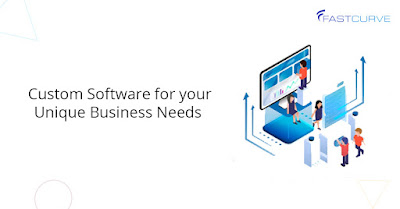The Role of ERP Software in Enhancing Business Functionality
Businesses increasingly depend on technology to streamline operations, improve customer experiences, and drive sustainable growth. ERP software cannot be underestimated in enhancing the functionality of web applications, which helps foster customer interactions and internal operations.
Enterprise resource planning (ERP) integrates various business processes into a consolidated framework with real-time data and insights for informed decision-making.
This article will explore how ERP software systems enhance the effectiveness of web applications, helping businesses improve efficiency, foster collaboration, and deliver customized experiences. We will also explore ERP systems' demand planning solutions to empower web applications to meet the market's transforming demands.
Explaining the ERP system
ERP software is a tool businesses use to plan and manage their regular activities, like supply chain management software, financial operations, and manufacturing. ERP is basically the brain of your business. It is one of the most potent IT solutions that unifies several processes, which helps automate and optimize functions.
The main objective of ERP implementation is to enhance efficiency and boost collaborations and data visibility, which will consequently help businesses make smarter decisions and perform better.
All the processes under ERP are operated independently, yet are interconnected and can majorly influence each other. This implies that problems in one specific area can impact the entire business.
What are the different types of ERP deployment?
Four types of ERP deployment methods can manage your IT operations. These different types have different benefits, and disadvantages, and businesses must recognize which ERP software deployment option best suits their needs. Here are the major types of ERP deployment:
1. On-premises ERP: On-premises ERP is the conventional way of deploying ERP software. In this type, software is installed directly on a company's server, giving full control over the business. However, this implies the company is responsible for installation, updates, and maintenance.
2. Two-tier ERP: Companies experiencing major changes, such as mergers or expansions, often utilize the two-tier ERP strategy. In this setup, the main ERP tier 1 might be on-premise at the headquarters, while the second ERO tier 2 can be cloud-based systems for specialized and local functions. This model helps leading IT companies gradually transfer to the cloud without operational disruptions.
3. Cloud ERP: The cloud ERP is hosted on a remote server and accessed through the software as a service (SaaS). The providers take care of IT maintenance, safety, and updates. This method is popular because of its lower upfront expenses, faster updates, easy integration, and greater scalability.
4. Hybrid ERP: A hybrid ERP integrates both on-premise and cloud-based systems, helping businesses select the best ERP software deployment model for each application. This approach can serve as a transition to an entirely cloud-based system while still adjusting applications that require on-premises for regulatory or safety reasons.
How to execute ERP in your organization?
You need thorough planning and execution to implement and execute an ERP software or enterprise resource planning. Here is a comprehensive guide for the same:
1. Recognize objectives: Evaluate your organization's needs to identify challenges and opportunities. Set clear, measurable objectives for ERP execution that align with your business objectives.
2. Select the right ERP system: Evaluate the different ERP solutions to select the one that fits all your needs. In the ERP selection process, you must engage with multiple vendors, request demos, and conduct several pilot security tests in application development to assess functionality and ease of use.
3. Create an execution team: After that, you must create a cross-functional team with IT members, finance, HR, and operations. Then, you should appoint a skilled project manager to lead the execution and make several data-driven decisions.
4. Develop a comprehensive plan: Review the existing data to recognize and correct inadequacies or redundancies. Develop a data mapping plan to cooperate with the new ERP integration systems. Moreover, utilize effective data migration tools for a seamless transition.
5. Customization and configuration: You can efficiently tailor the ERP system to fit your business processes. You must involve the key users in the customization process to ensure it meets their needs and expectations.
6. Full deployment: Finally, you must roll out the ERP system across the organization, ensure data migration strategies and consolidations are complete, and provide ongoing support to address significant issues during the transition.
7. Change management and training: You need to create a training program customized to different departments and roles. You can also execute an ERP change management strategy to address employee concerns and communicate the new system's advantages.
8. Pilot testing: To test these ERP systems in a controlled environment, you need to run a pilot phase with a small group of users. You must gather feedback and make necessary adjustments before the full software deployment.
ERPs play a major role in enhancing the web application functionality. You must be aware of a strategic plan to execute the ERP software in your organization.
You can use several types of ERP methods, such as cloud ERP, on-premises, two-tier, and hybrid ERP, to deploy your secure web applications. Understanding the benefits, characteristics, and types will help you make informed application decisions.
Fastcurve is a leading IT solutions provider that provides services for creating secure web applications for your business. Our services range from design to monitoring the app’s performance after its launch in the real world.



Comments
Post a Comment